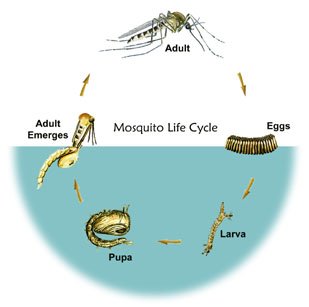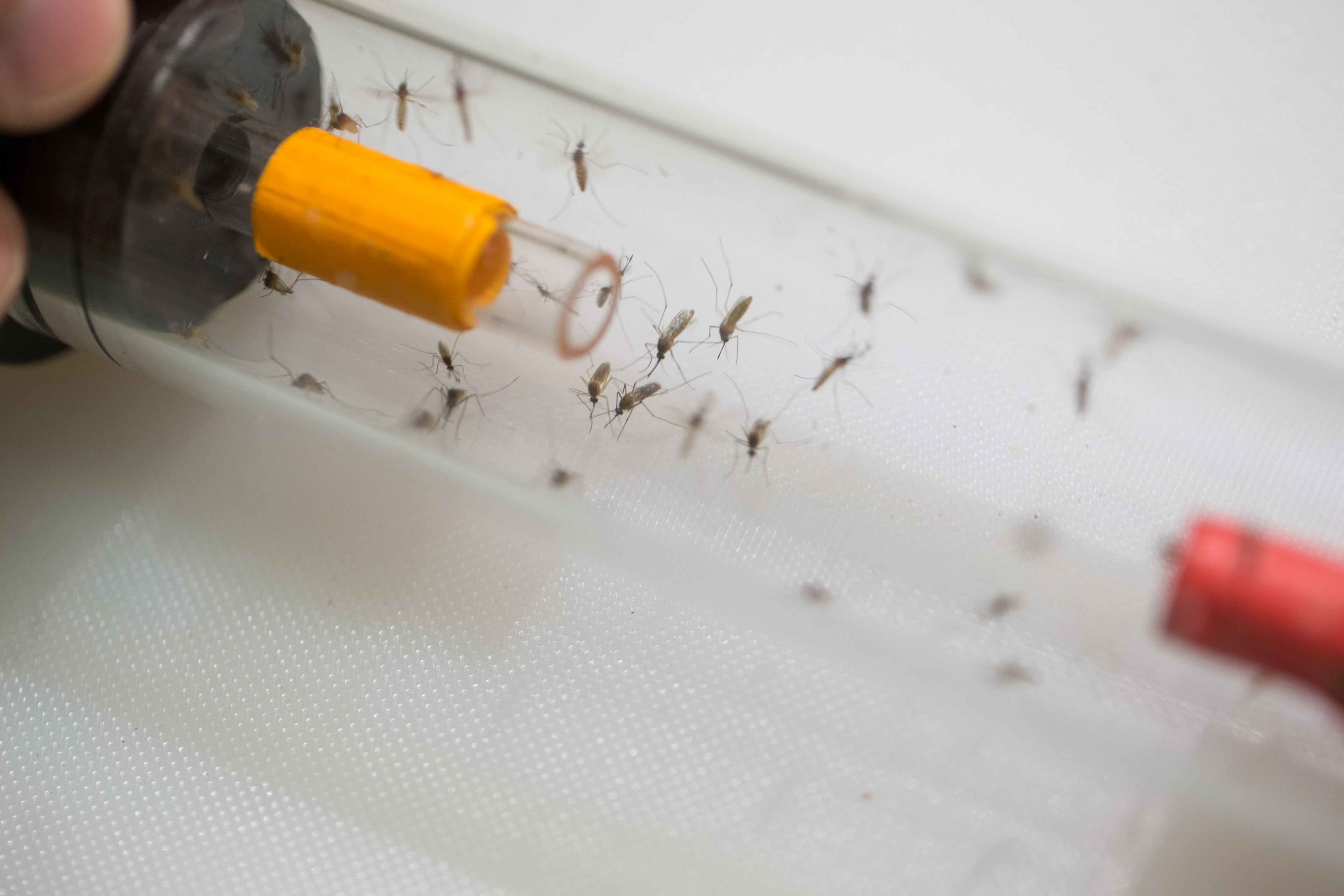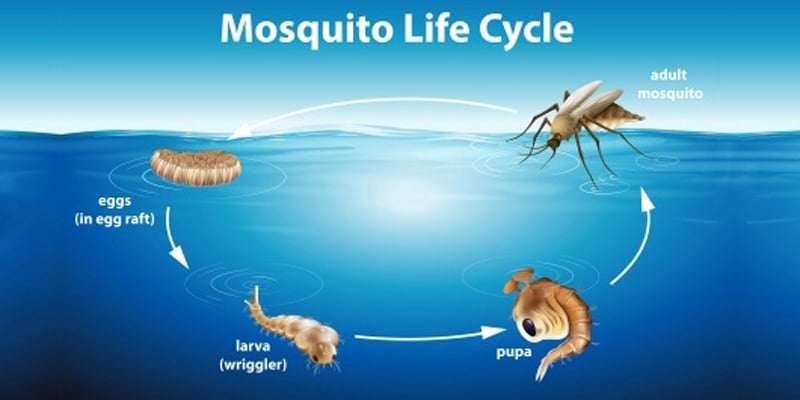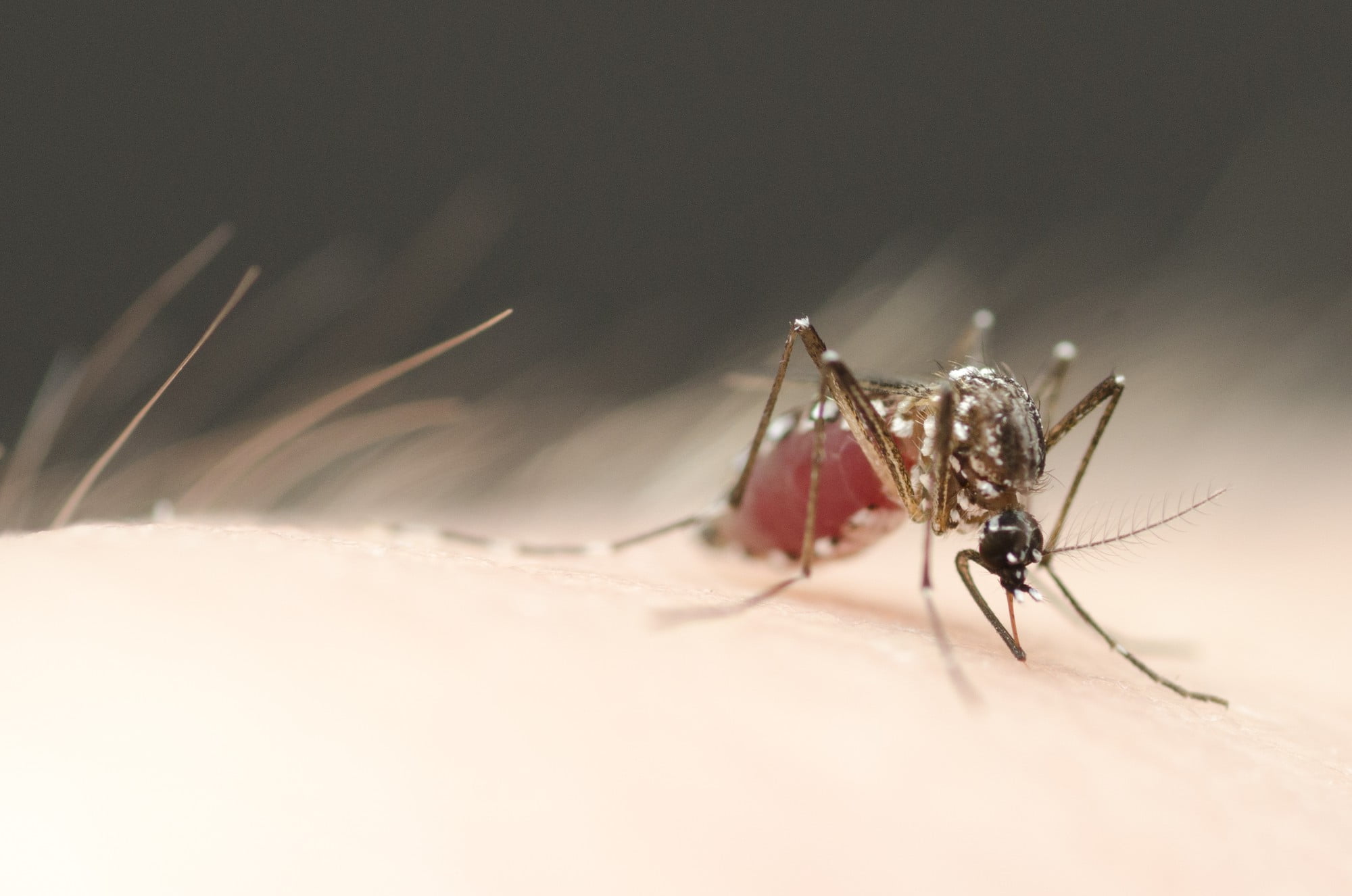Mosquitoes lay their eggs in water, specifically in standing water sources around homes and yards. Female mosquitoes seek out stagnant water to lay small, white, oval-shaped eggs in rows near or on the water.
By identifying and eliminating these breeding sites, one can effectively control mosquito populations. It is crucial to regularly check and remove standing water in flower pot trays, plants, and open containers to prevent mosquitoes from laying eggs and breeding in these areas.
Understanding where mosquitoes lay their eggs is essential in implementing effective mosquito control measures and reducing the risk of mosquito-borne diseases. By taking proactive steps to eliminate standing water, individuals can help minimize mosquito populations and protect themselves from bites.

Credit: www.epa.gov
Mosquitoes’ Preferred Breeding Grounds
Mosquitoes prefer laying their eggs in stagnant water, which can include ponds, marshes, swamps, and other wetland habitats. Standing water in flower pot trays, plants, and open containers around the house can also become breeding grounds for mosquitoes. Female mosquitoes lay small, white, oval-shaped eggs in rows near or on the water.
Water Sources: A Nursery For Mosquito Offspring
When it comes to finding a suitable spot to lay their eggs, mosquitoes have a clear preference for water sources. Whether it’s a small pool of water or a tiny container, these pesky insects are drawn to any standing water they can find. It’s important to understand that different mosquito species have varying preferences for the type of water they choose for their breeding grounds.The Impact Of Standing Water On Mosquito Reproduction
Standing water plays a crucial role in the reproduction of mosquitoes. Female mosquitoes, after obtaining a blood meal, lay their eggs directly on or near water, soil, or at the base of some plants in places that may fill with water. The eggs are small, white, and oval-shaped, often arranged in rows. Interestingly, mosquito eggs can survive dry conditions for a few months until they hatch in water.To prevent the proliferation of mosquitoes, it is essential to eliminate any potential breeding grounds around your home. Here are some common places where mosquitoes lay their eggs:- Flower pot trays: These trays often collect water and provide an ideal environment for mosquitoes to lay their eggs. Make sure to regularly empty and clean these trays to prevent mosquito breeding.
- Plants: Some mosquitoes, like the Aedes species, lay their eggs on the surface of water-filled plant containers. Remove any standing water from plant saucers or consider using soil moisture sensors to avoid overwatering.
- Open containers: Mosquitoes can lay their eggs in any open container that collects water, such as buckets, discarded tires, or even bottle caps. It’s crucial to remove or cover these containers to prevent water accumulation.
Diverse Habitats For Egg-laying
When it comes to mosquitoes, they have diverse habitats for laying their eggs. Let’s explore two key environments where mosquitoes tend to deposit their eggs.
Natural Vs. Artificial Water Bodies
Mosquitoes are adaptable creatures and can lay their eggs in both natural and artificial water bodies. This includes ponds, marshes, and even man-made containers like discarded tires or buckets filled with rainwater.
Soil Moisture: A Mosquito Nursery
In addition to water bodies, mosquitoes also utilize soil moisture as a nursery for their eggs. They prefer damp soil areas where water may collect, providing a suitable environment for egg-laying.
Lifecycle Of A Mosquito: From Eggs To Adults
Mosquitoes lay their eggs in or near water, including stagnant bodies like ponds, marshes, and swamps. The female mosquito typically lays small, white, oval-shaped eggs in rows near or on the surface of the water. If there is no water available, the mosquito will lay eggs elsewhere, driven by the species’ behavior.
Mosquitoes are notorious pests that can make our lives miserable during the warmer months. But have you ever wondered where these pesky insects come from? Understanding the lifecycle of a mosquito, from eggs to adults, can shed some light on their behavior and help us develop effective strategies for mosquito control.
Survival Mechanisms Of Mosquito Eggs
Mosquitoes lay their eggs in water, but not just any water will do. Each species of mosquito has its own preference when it comes to the type of water it chooses for egg-laying. Some mosquitoes prefer standing water, such as ponds or marshes, while others are attracted to more stagnant sources, like rain barrels or even discarded containers in our yards.
Once a female mosquito finds a suitable water source, she lays her eggs directly on or near the water’s surface. These eggs are equipped with special survival mechanisms that allow them to withstand dry conditions for several months. This adaptation ensures that the eggs can hatch even when the water source dries up temporarily.
The Transformation From Larva To Pupa
After a period of time, the mosquito eggs hatch, and tiny larvae emerge. These larvae, often referred to as “wrigglers,” spend their time in the water feeding on organic matter and developing into pupae. The larvae have specialized breathing tubes that allow them to obtain oxygen from the water’s surface.
During the pupa stage, which follows the larval stage, the mosquito undergoes a remarkable transformation. The pupae do not feed, but instead, they float near the water’s surface, relying on air sacs to breathe. Inside the pupa’s protective casing, the mosquito’s body undergoes significant changes as it prepares to emerge as an adult.
Finally, after a few days, the adult mosquito emerges from the pupal casing and takes its first flight. The entire lifecycle from egg to adult can take anywhere from a few days to several weeks, depending on factors such as temperature and food availability.
It’s important to note that only female mosquitoes bite humans and animals to obtain blood, which they need for egg development. Male mosquitoes, on the other hand, feed on nectar and other plant juices. Understanding the lifecycle of a mosquito can help us target specific stages for control and prevention, reducing their population and minimizing the risk of mosquito-borne diseases.
By eliminating or treating stagnant water sources, such as removing standing water from containers and regularly cleaning out gutters, we can disrupt the mosquito’s lifecycle and reduce their numbers. Additionally, using mosquito repellents and wearing protective clothing can help prevent mosquito bites and reduce the transmission of diseases.
Species-specific Egg-laying Behaviors
How Different Mosquito Species Choose Their Sites
Each mosquito species has unique preferences when it comes to selecting egg-laying sites.
- Some prefer clean, stagnant water while others thrive in polluted water sources.
- Specific species may choose natural containers like tree holes, while others opt for artificial containers like tires.
Adaptations To Diverse Water Environments
Mosquitoes have evolved various adaptations to lay their eggs in diverse water environments.
- Species that lay eggs in brackish water have developed tolerance to salt concentrations.
- Others have adapted to urban settings, utilizing man-made containers for egg-laying.
| Mosquito Species | Preferred Egg-Laying Site |
|---|---|
| Anopheles | Clean, still water sources |
| Aedes | Artificial containers with stagnant water |
| Culex | Polluted water sources |
Understanding these species-specific behaviors is crucial for effective mosquito control strategies.
Household Items As Potential Breeding Sites
Common household items can unknowingly become breeding grounds for mosquitoes. It is important to be aware of these potential breeding sites in order to prevent the spread of mosquitoes in and around your home.
Common Household Objects That Attract Mosquitoes
Various common household objects can attract mosquitoes and serve as ideal breeding sites. These include:
- Unused flower pots and trays
- Clogged gutters and drains
- Bird baths and pet water bowls
- Old tires and containers
- Open containers and buckets
Preventing Your Home From Becoming A Breeding Ground
To prevent mosquitoes from using household items as breeding sites, it is essential to take proactive measures:
- Regularly empty and clean water-holding containers
- Keep gutters and drains clear of debris
- Dispose of old tires and containers responsibly
- Cover or turn over any open containers and buckets
- Ensure proper maintenance of bird baths and pet water bowls
- Use mosquito repellents and traps
Seasonal Patterns In Mosquito Breeding
Mosquitoes are known to breed and lay their eggs in various locations, and their activity is often influenced by seasonal changes. Understanding the seasonal patterns in mosquito breeding can help homeowners take proactive steps to minimize mosquito populations around their homes.
Weather Conditions Influencing Egg-laying
Mosquitoes are more likely to lay their eggs in areas with standing water, making them more active during warm and wet seasons. The ideal temperature for egg-laying is between 50 to 95 degrees Fahrenheit, and high humidity levels also promote mosquito breeding. Rainfall and the presence of stagnant water are crucial factors that influence the abundance of mosquito breeding sites.
Seasonal Prevention Tips For Homeowners
As part of seasonal mosquito control efforts, homeowners can take several preventative measures to discourage mosquito breeding around their properties. Here are some seasonal prevention tips:
- Remove Standing Water: Regularly inspect and eliminate any sources of standing water around the property, such as clogged gutters, birdbaths, and containers.
- Keep Yards Tidy: Trim overgrown vegetation and mow the lawn regularly to reduce potential mosquito resting areas.
- Install Screens: Use window and door screens to prevent mosquitoes from entering the home.
- Use Mosquito Repellents: Apply EPA-approved insect repellents when spending time outdoors, especially during peak mosquito activity times.
- Consider Professional Services: Engage professional pest control services to implement targeted mosquito control measures, such as larvicide treatments in standing water areas.
Mosquito Eggs And Human Health
Mosquitoes lay their eggs in standing water, such as flower pot trays and open containers, creating breeding grounds. Female mosquitoes carefully place small, oval-shaped eggs in rows near or on water sources. The presence of stagnant water in various areas can lead to an increase in mosquito egg populations.
Diseases Transmitted By Mosquitoes
Mosquitoes are not just annoying insects that buzz around and bite us, they are also carriers of various diseases. Mosquito-borne diseases are responsible for millions of deaths worldwide every year. Some of the most common diseases transmitted by mosquitoes include malaria, dengue fever, Zika virus, yellow fever, and chikungunya. Mosquitoes are not the actual disease-causing agents; rather, they act as vectors that transmit the viruses and parasites from infected people to healthy individuals.The Importance Of Controlling Mosquito Populations
Controlling the mosquito population is crucial in preventing the spread of diseases. Mosquitoes breed in stagnant water, and it takes only a small amount of water to create a breeding site for mosquitoes. Therefore, it is essential to eliminate any standing water around your home and property to reduce the number of mosquitoes. Mosquito control measures such as using mosquito repellents, mosquito nets, and insecticides can also help prevent mosquito bites and reduce the transmission of diseases.Mosquito eggs are a vital component in the life cycle of mosquitoes. Female mosquitoes lay their eggs in stagnant water, and it takes around 2-3 days for the eggs to hatch into larvae. While mosquito eggs themselves do not pose a direct threat to human health, they can indirectly cause harm by increasing the mosquito population and the spread of diseases. Therefore, it is crucial to eliminate any potential breeding sites for mosquitoes and control their population to reduce the risk of mosquito-borne diseases.
Credit: phys.org
Innovative Approaches To Mosquito Control
Mosquitoes lay their eggs in various water sources such as flower pot trays, plants, and open containers around the house. They seek out stagnant bodies of water to lay their small, white, oval-shaped eggs in rows near or on the water.
Each species of mosquito has its own preferences for egg-laying sites.
Innovative Approaches to Mosquito ControlMosquitoes are notorious for their itchy bites and the diseases they transmit. To control the mosquito population, it is important to understand where they lay their eggs. Female mosquitoes lay their eggs directly on or near water, soil, and at the base of some plants in places that may fill with water. This makes standing pools of water, flower pot trays, plants, and open containers around the house some of the most common places for mosquitoes to breed.Biological Control MethodsOne innovative approach to mosquito control is the use of biological control methods. This approach uses natural enemies of mosquitoes, such as fish, bacteria, fungi, and nematodes, to control their population. For example, introducing mosquito-eating fish such as Gambusia affinis, also known as the mosquitofish, into ponds and other standing water bodies can help reduce the mosquito population. Additionally, a bacterium called Bacillus thuringiensis israelensis (Bti) can be used to kill mosquito larvae in standing water.Technological Advancements in Mosquito ManagementAnother innovative approach to mosquito control is the use of technological advancements. For example, mosquito traps can be used to capture and kill mosquitoes. These traps use carbon dioxide and other attractants to lure mosquitoes into the trap, where they are then killed. Additionally, mosquito repellent clothing, mosquito nets, and mosquito-repelling devices such as ultrasonic devices and mosquito-repelling lamps can be used to keep mosquitoes away.In conclusion, innovative approaches to mosquito control such as biological control methods and technological advancements in mosquito management can help reduce the mosquito population and the diseases they transmit. By understanding where mosquitoes lay their eggs and implementing effective control methods, we can create a safer and healthier environment for ourselves and our communities.
Credit: www.maconmosquito.org
Frequently Asked Questions
Where Do Mosquitoes Lay Their Eggs In A House?
Mosquitoes lay their eggs in standing water in various places around the house, such as flower pot trays and open containers.
How To Find A Mosquito Nest?
To find a mosquito nest, look for stagnant bodies of water where mosquitoes lay their eggs. Female mosquitoes lay small, white, oval-shaped eggs in rows near or on the water. Check for standing water in flower pot trays, plants, and open containers around your house, as they can create breeding grounds for mosquitoes.
Remember, mosquitoes prefer moist areas, so the more moist areas in your yard, the more mosquito eggs you may have.
Which Is The Most Common Place For Mosquitoes To Lay Their Eggs?
The most common place for mosquitoes to lay their eggs is standing pools of water. Female mosquitoes lay small, white, oval-shaped eggs in rows near or on the water. Mosquitoes prefer stagnant water within which to lay their eggs, such as in flower pot trays, plants, and open containers around the house.
However, they will lay eggs elsewhere if there is no water available.
Conclusion
Understanding where mosquitoes lay their eggs is crucial for effective pest control. By eliminating standing water and implementing preventive measures, you can reduce mosquito breeding sites and minimize the risk of mosquito-borne diseases. Stay vigilant and proactive in managing potential mosquito habitats to protect yourself and your community.
Related posts:

I’m MD Tanvir, and I bring years of expertise gained from working closely with pest control companies to the forefront. My journey in the industry has inspired me to launch Bug Battler, a platform aimed at equipping people with the know-how to combat pests autonomously. Through Bug Battler, I aim to empower individuals with practical insights to tackle pest infestations effectively.

